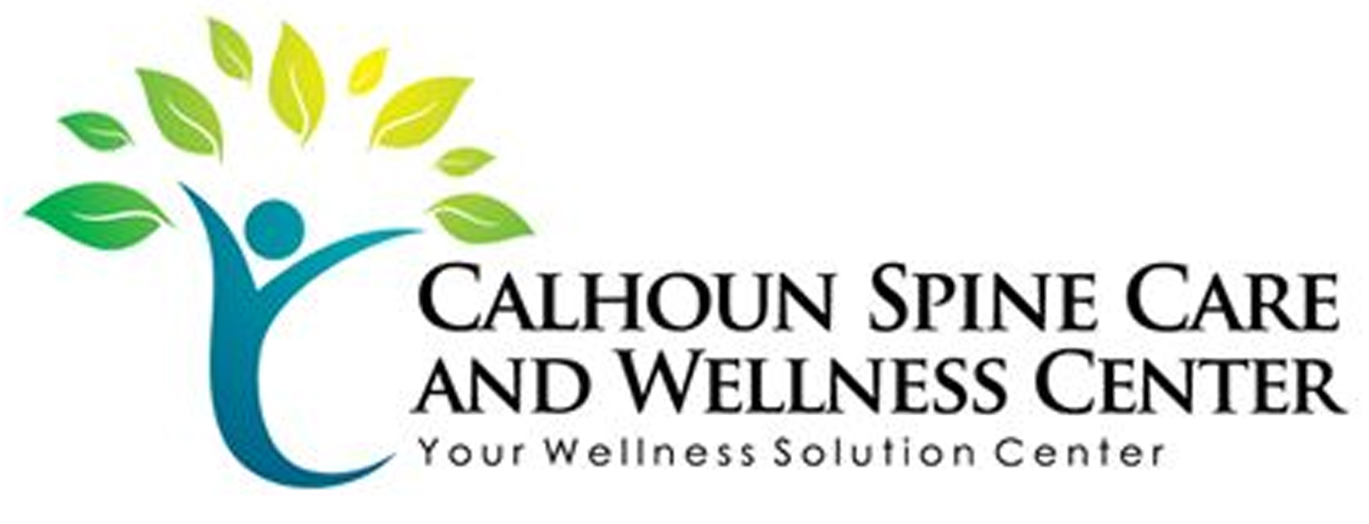If you're grappling with sciatica pain in Calhoun, you might be wondering about affordable solutions that can bring you relief without breaking the bank. Local health clinics often provide low-cost options like physical therapy and chiropractic care, while community wellness programs focus on effective pain management strategies. You should also consider simple at-home remedies, like over-the-counter medications and targeted exercises. But what specific resources and techniques can truly make a difference in your daily life? Let's explore some practical options that could ease your discomfort.
Understanding Sciatica Pain
Sciatica pain often feels like a sharp, shooting sensation that radiates from your lower back down through your legs. This discomfort arises when the sciatic nerve, the longest nerve in your body, gets compressed or irritated. You might experience a burning or tingling sensation, and in some cases, it can lead to weakness in your legs. Understanding the nature of this pain is essential for finding effective relief.
Typically, sciatica is caused by a herniated disc, bone spur, or spinal stenosis. These conditions can put pressure on the sciatic nerve, triggering the pain you feel. You may notice that certain activities, like sitting for extended periods or twisting your torso, exacerbate your symptoms.
It's also common for sciatica pain to worsen when you cough or sneeze, as this can increase pressure on the nerve.
Additionally, sciatica isn't just a one-time issue. It can be chronic, meaning it lingers for weeks or months, greatly impacting your daily life. You might find it challenging to perform simple tasks or enjoy activities you once loved.
Understanding sciatica helps you recognize your body's signals and identify triggers that worsen your condition. Recognizing the signs and symptoms of sciatica can empower you to seek appropriate medical advice.
At-Home Remedies
Wondering how you can find relief from sciatica pain without leaving your home? You have several effective at-home remedies at your disposal that can help ease your discomfort.
One of the simplest options is applying heat or ice to the affected area. Start with ice packs to reduce inflammation for the first 48 hours, then switch to a heating pad to relax tight muscles and improve blood flow.
Another remedy is to create a comfortable resting environment. Elevate your legs while lying down to relieve pressure on your sciatic nerve. You can also invest in a supportive chair if you need to sit for long periods; proper lumbar support is essential for reducing strain on your back.
Over-the-counter pain relievers like ibuprofen or acetaminophen can also provide temporary relief. Be sure to follow the dosage instructions and consult with your doctor if you're unsure.
Incorporating herbal remedies may also help. Turmeric, for instance, has anti-inflammatory properties that might ease pain. You can drink it in warm milk or take it as a supplement.
Lastly, consider practicing mindfulness techniques such as deep breathing or meditation. They can help you manage the emotional toll of chronic pain, allowing you to approach your discomfort with a calmer mindset.
Stretching and Exercise
Incorporating stretching and exercise into your routine can greatly alleviate sciatica pain. When you engage in regular stretching, you help improve flexibility and reduce muscle tension, which can relieve pressure on the sciatic nerve.
Start with gentle stretches that target your lower back, hips, and hamstrings. Simple moves like the seated hamstring stretch or the figure-four stretch can work wonders. Hold each stretch for about 30 seconds, and repeat a few times throughout your day.
Exercise is equally important. Low-impact activities like walking, swimming, or cycling can strengthen your core and lower back muscles, providing better support for your spine. Aim for at least 30 minutes of moderate exercise most days of the week. You don't have to push yourself too hard; consistency is key.
In addition to stretching and aerobic activities, consider incorporating strength training into your routine. Building strength in your abdominal and back muscles can help stabilize your spine and reduce the likelihood of future pain episodes.
Focus on exercises that engage your core, like planks or bridges, and perform them a few times a week.
Always listen to your body. If you feel pain while stretching or exercising, back off and adjust your approach. Gradually increasing your activity level can lead to sustainable relief.
Local Physical Therapy Options
When you're seeking relief from sciatica, local physical therapy centers can be a great resource.
Many community therapy centers offer tailored programs that fit your needs and budget.
Plus, it's worth checking your insurance coverage options to make your treatment even more affordable.
Community Therapy Centers
Exploring local community therapy centers can be a game-changer for those seeking affordable relief from sciatica pain.
These centers often provide a range of services tailored to your needs, making it easier to manage discomfort and improve mobility without breaking the bank.
Here are three key benefits you can expect from community therapy centers:
- Personalized Care: You'll receive treatment plans designed specifically for you, considering your unique condition and lifestyle. This can enhance the effectiveness of your recovery.
- Affordable Options: Many community therapy centers offer sliding scale fees or payment plans, making it easier to access the care you need without financial strain.
- Access to Various Therapies: From physical therapy to acupuncture, these centers usually provide multiple treatment modalities.
You can explore different methods to find what works best for your sciatica relief.
Insurance Coverage Options
Finding the right local physical therapy options can greatly enhance your sciatica relief journey, especially when considering insurance coverage. Before committing to a therapy plan, it's essential to check what your insurance covers. Many insurance providers offer benefits for physical therapy, but coverage can vary widely.
Start by reviewing your policy details or contacting your insurance company directly. Ask about the specific benefits for physical therapy, including copays, deductibles, and any limits on the number of visits. Understanding your coverage will help you find a physical therapist that fits your financial situation and needs.
Once you've clarified your insurance benefits, search for local physical therapy clinics that accept your plan. Many clinics provide a list of accepted insurances on their websites. If you're unsure, don't hesitate to call and inquire directly.
Some clinics also offer payment plans or sliding scale fees if you're underinsured. Take advantage of these options, as they can make therapy more accessible.
With the right information and support, you can focus on your recovery without the added stress of unexpected costs.
Affordable Over-the-Counter Medications
For those seeking relief from sciatica pain, affordable over-the-counter medications can provide a quick and effective solution. These medications are easily accessible and can help manage your discomfort without breaking the bank.
When considering over-the-counter options, you'll find several types that may work for you. Here are three popular choices:
- Nonsteroidal Anti-Inflammatory Drugs (NSAIDs): Medications like ibuprofen or naproxen can reduce inflammation and alleviate pain. They're effective for many people, but make sure to follow the recommended dosage.
- Acetaminophen: If you prefer a gentler option, acetaminophen can help relieve pain without the anti-inflammatory properties of NSAIDs. It's often recommended for those who may have stomach issues or are sensitive to NSAIDs.
- Topical Analgesics: Creams and gels containing menthol or capsaicin can provide localized relief when applied directly to the painful area. These products can be a great alternative if you want to avoid systemic medications.
Always consult your healthcare provider before starting any new medication, especially if you're already on other treatments.
Remember that while over-the-counter medications can offer temporary relief, they're just one part of a thorough approach to managing sciatica pain. Combining them with lifestyle changes and physical therapy can enhance your overall comfort and improve your quality of life.
Heat and Cold Therapy
When you're dealing with sciatica pain, heat and cold therapy can be game-changers.
Heat therapy helps relax tight muscles and improve blood flow, while cold therapy reduces inflammation and numbs sharp pain.
Understanding how to use both methods effectively can provide you with much-needed relief.
Benefits of Heat Therapy
Heat therapy offers a powerful way to alleviate sciatica pain, providing soothing relief that can make a significant difference in your daily life. When you apply heat to the affected area, it increases blood flow, which helps relax tense muscles and can reduce discomfort.
Here are three key benefits of using heat therapy for sciatica relief:
- Muscle Relaxation: The warmth penetrates deep into your muscles, helping them relax and easing any spasms that may be contributing to your pain.
- Improved Circulation: Heat increases blood flow to the area, promoting healing and delivering essential nutrients to damaged tissues. This can enhance your overall recovery process.
- Enhanced Mobility: By loosening tight muscles and relieving stiffness, heat therapy can help you move more freely, making daily tasks easier and less painful.
You can easily incorporate heat therapy into your routine with options like heating pads, warm baths, or hot water bottles.
Just remember to apply the heat for about 15-20 minutes at a time, ensuring you give your body the gentle care it needs to reduce sciatica discomfort effectively.
Advantages of Cold Therapy
While heat therapy is highly effective for relieving sciatica pain, cold therapy can also play an essential role in your recovery. Using cold therapy can help reduce inflammation and numb sharp pain, making it a valuable tool in your pain management arsenal.
When you apply ice packs or cold compresses to the affected area, you constrict blood vessels, which can limit swelling and provide immediate relief. Cold therapy is particularly beneficial right after an injury or flare-up. By addressing inflammation early, you can often prevent the pain from escalating.
Additionally, it's a simple and cost-effective solution; you can use ice packs, frozen vegetables, or even a bag of ice wrapped in a towel. You might also find that alternating between heat and cold therapy maximizes your relief.
While cold can help with inflammation, heat can promote blood flow and relax tense muscles. Just remember to limit cold exposure to about 15-20 minutes at a time to avoid skin damage.
Incorporating cold therapy into your routine can offer you a well-rounded approach to managing sciatica pain effectively and affordably.
Community Resources in Calhoun
In Calhoun, you'll find a variety of community resources designed to help you manage and relieve sciatica pain effectively. These resources can provide you with support, knowledge, and tools to combat your discomfort without breaking the bank.
Here are three options you might consider:
- Local Health Clinics: Check out community health clinics that often offer low-cost or sliding scale services. They can provide physical therapy, chiropractic care, and consultations with healthcare professionals who understand sciatica.
- Support Groups: Joining a local support group can be invaluable. Connecting with others who are dealing with similar issues can offer emotional support, practical tips, and shared experiences that help you feel less isolated in your journey.
- Wellness Programs: Some community centers or organizations in Calhoun may offer wellness programs or workshops focused on pain management. These programs frequently include exercise classes tailored to improve flexibility and strength, which can be essential for sciatica relief.
Lifestyle Changes for Prevention
Making a few key lifestyle changes can considerably reduce your risk of developing sciatica or experiencing flare-ups. Start by focusing on your posture, especially if you spend long hours sitting. Make sure your chair supports your lower back, and keep your feet flat on the floor.
When lifting heavy objects, bend your knees and keep the load close to your body to avoid straining your back.
Regular exercise is another vital component. Incorporate activities that strengthen your core and improve flexibility, such as yoga or pilates. Aim for at least 30 minutes of moderate activity most days of the week.
Walking is a great low-impact option that can also promote circulation and reduce tension in your lower back.
Pay attention to your weight, too. Maintaining a healthy weight can alleviate extra pressure on your spine and nerves. If you're overweight, consider a balanced diet rich in fruits, vegetables, whole grains, and lean proteins to help shed those extra pounds.
Lastly, manage stress effectively. High stress levels can lead to muscle tension, which may exacerbate sciatica symptoms. Practicing relaxation techniques like mindfulness, deep breathing, or meditation can help keep stress in check.
Conclusion
To sum up, finding affordable solutions for sciatica relief in Calhoun is possible with a mix of at-home remedies, local resources, and lifestyle changes. By exploring options like community wellness programs, physical therapy, and over-the-counter medications, you can effectively manage your pain without breaking the bank. Remember to incorporate stretching and exercise into your routine and consider heat and cold therapy for added relief. Taking these steps can lead you toward a healthier, pain-free life.



